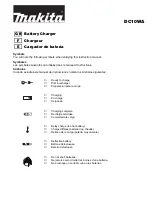
1-14 Technical Information
ROM BIOS
The system uses a Flash ROM known as the system's ROM BIOS to store machine lan-
guage programs. The BIOS size is 256 KB, consisting of the system utility (PCMCIA, Auto
Setup), system BIOS, video BIOS, and power management.
The BIOS programs execute the power-on self-test (POST), initialize CPU controllers, and
interact with the LCD indicator panel, diskette drive, hard drive, communication devices
and peripherals. The system BIOS also contains Auto Setup and provides VGA controller
support. The ROM BIOS is copied into RAM (shadowing) for optimum performance.
The ROM BIOS contains both the system and video BIOS. The system BIOS is located in
the upper portion of the device, video BIOS is located in the lower portion. System BIOS is
located between F000h-FFFFh.
The BIOS often changes after the product release to provide enhanced features or bug
fixes. To acquire the latest BIOS release, the ROM is flashed electronically allowing the
BIOS update to occur without removing the ROM. See Section 2, Setup and Operation, for
BIOS upgrade procedures.
VGA Controller
The video architecture is maintained using the C&T65545B1-5 or C&T65545B2-H Con-
troller and support logic. The controller supports video standards including EGA and CGA.
This powerful circuitry provides the following features for the system via the controller and
LCD:
1-MB VRAM
true-color and high-color display capability with 640 x 480 resolution
supports external CRT resolutions up to 1024 x 768
hardware windows acceleration
bit boundary block transfer
simultaneous LCD/CRT display in 640 x 480 VGA display mode
optional frame memory
high resolution graphics support.
















































